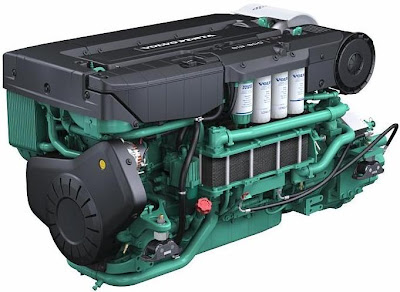Short Description
This workshop manual contains technical specification, descriptions and instructions for repairing the standard versions of the following engines TAMD31M, TAMD31L, TAMD31P, AD31L, AD31P, KAD32P, TAMD41H, TAMD41M, TAMD41P, AD41P, TAMD42WJ, KAMD42A, KAMD42B, KAMD42P, KAD42A, KAD42B, KAD42P, KAMD43P, KAD43P, KAMD44P, KAD44P. The workshop manual displays the operations carried out on any of the engines above. As a result the illustrations and pictures in the manual that show certain parts on the engines, do not in some cases apply to all the engines listed above. However the repair and service operations described are the same in all essential details. Where they are not the same this is stated in the manual and where the difference is considerable the operations are described separately. Engine designations and numbers are given on the number plate (See Workshop manual Group 21 Engine page 15). The engine designation and number should be given in all correspondence about the engine.
Website: www.capedory.org | Filesize: 1610kb
No of Page(s): 44
Content
…
Tolerance classes
Screws and nuts are divided into different strength classes, the class is indicated by the number on the bolt head. A high number indicates stronger material, for example a bolt marked 10-9 indicates a higher tolerance than one marked 8-8. It is therefore important that bolts removed during the disassembly of a bolted joint must be reinstalled in their original position when assembling the joint, It a bolt must be replaced check in the replacement parts catalogue to make sure the correct bolt is used.
…
Sealants
A number of sealants and locking liquids are used on the engines. The agents have varying properties and are used for different types of jointing strengths, oper ating temperature ranges, resistance to oil and other chemicals and for the different materials and gap sizes in the engines. To ensure service work is correctly carried out it is important that the correct sealant and locking fluid type is used on the joint where the agents are required. In this Volvo Penta Service Manual the user will find that each section where these agents are applied in production states which type was used on the engine. During service operations use the same agent or an alternative from a different manufacturer. Make sure that mating surfaces are dry and free from oil, grease, paint and anti-corrosion agent before applying sealant or locking fluid. Always follow the manufacturer’s instructions for use regarding; temperature range, curing time and any other instructions for the product. Two different basic types of agent are used on the engine and these are: RTV agent (Room temperature vulcanizing). Use for gaskets, sealing gasket joints or coating gaskets. RTV agent is clearly visible when a component has been dismantled; old RTV must be removed before the joint is resealed.
…
Get the file Download here
